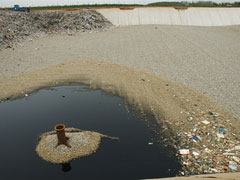Methane Gas Can Be Harmful If Not Contained or Burned
Feb 22


Methane is a natural gas, and when it is burned, carbon dioxide and water are produced as by-products. It only burns when oxygen is present, and because methane is quite clean while burning, it is an attractive source of fuel. However, if it is not burned, methane gas can be poisonous to humans.

Another way to get methane gas poisoning is via ingestion. Although this is a rare possibility, it should still be taken into consideration. Methane gas that is naturally created has been known to get into natural water reservoirs. Children sometimes eat soil or dirt, and may ingest trace of methane along with it! Of course, the ingestion exposure level is quite low and there should not even be any visible effects on your body, but this does not make methane gas less harmful overall.
Methane gas poisoning may also occur via touch, although the possibility of this is extremely low as well. It is difficult for methane to penetrate the skin but if it does, the body usually disposes of it through urine or respiration. So, very small doses of it are generally OK.
There are many methane recovery systems now installed in landfills, which reduce about 50 percent of the emissions into the atmosphere. Sometimes the methane that is recovered is flared off, which produces carbon dioxide – a much less powerful greenhouse gas. The methane recovery systems also serve as a source of energy that is economically viable, with the methane that is collected being used to generate electricity. Emissions may also be reduced by up to 90 percent if special liners under landfills are used in order to prevent leakage into groundwater nearby.
For the original article,click here
For more information on methane, go to:
en.wikipedia.org,
epa.gov
Related Posts
- In the future: You might get a ticket for that plastic grocery bag
- New study on smog, health and heart attacks – if you live in Los Angeles do not read this article.
- U.N. Issues Cease and Desist on Japan’s Controversial Whaling Practices
- Benefits of Using Energy Saving Light Bulbs
- The Toll of Tourism
Leave a Reply
You must be logged in to post a comment.






